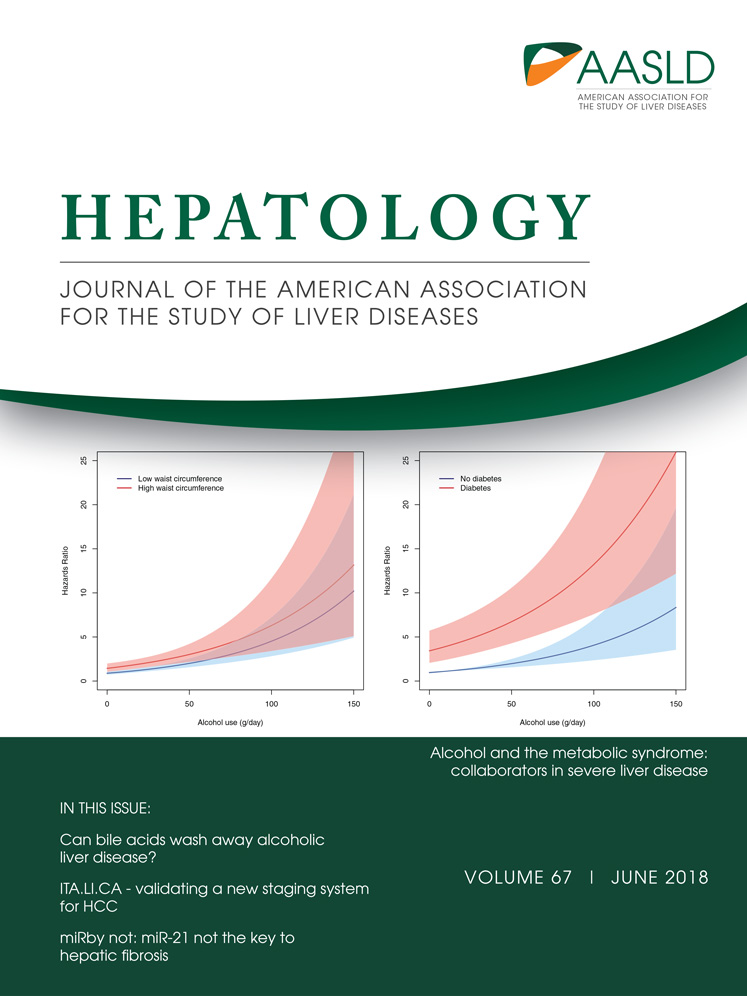Magic mirror on the wall: Which is the best biomarker for hepatocellular carcinoma?
Potential conflict of interest: Nothing to report.
Supported by Taipei Veterans General Hospital, Taiwan (V106C-021, VN106-11).
We read with interest the paper, “A large-scale, multicenter serum metabolite biomarker identification study for the early detection of hepatocellular carcinoma,” by Luo et al. published in an upcoming issue of Hepatology.1 A few concerns which could compromise the paper's conclusions may deserve the authors' attention.
Serum α-fetoprotein (AFP) is widely used for hepatocellular carcinoma (HCC) detection and screening. In this study, however, it is quite striking that the area under receiver-operating characteristic curve (AUC) for AFP was only 0.657 in the discovery set because the reported AUC in most published studies was between 0.72 and 0.89, depending on tumor characteristics.2-5 Notably, several novel biomarkers, such as des-gamma carboxyprothrombin, lens culinaris agglutinin-reactive AFP, insulin-like growth factor-2, Golgi protein-73 and human hepatocyte growth factor, have all been raised as potential tumor markers for HCC, but none has been validated for clinical use.
An important feature of a classical tumor marker is that its blood levels should correlate with tumor burden. It is well known that serum AFP levels tend to increase with larger tumors. Therefore, it would be interesting to know if there is a correlation between the metabolite biomarker (phenylalanyl-tryptophan and glycocholate) and the size of tumor. In addition, a significant drop of serum metabolite levels after tumor eradication is also indirect evidence that the marker is truly released from the tumors.
There is another methodological question regarding this study. To confirm if the metabolite biomarker could predict the development of HCC, the best way is to perform Kaplan-Meier analysis during the follow-up period rather than testing multiple AUCs at different specific time points. Moreover, since most patients in the authors' series had chronic hepatitis B, baseline viral load and the presence of cirrhosis are also known crucial factors to determine cancer development. Collectively, the proposed metabolite biomarker still has many challenges to overcome to be judged as a genuine biomarker for HCC.
-
Teh-Ia Huo, M.D.1,2,3
-
Chia-Yang Hsu, M.D., M.P.H.2,4
-
Po-Hong Liu, M.D., M.P.H.2,5
-
1Department of Medicine, Taipei Veterans General Hospital, Taipei, Taiwan
-
2Faculty of Medicine, National Yang-Ming University of Medicine, Taipei, Taiwan
-
3Institute of Pharmacology, National Yang-Ming University School of Medicine, Taipei, Taiwan
-
4Department of Internal Medicine, University of Nevada School of Medicine, Reno, NV
-
5Harvard T.H. Chan School of Public Health, Boston, MA




